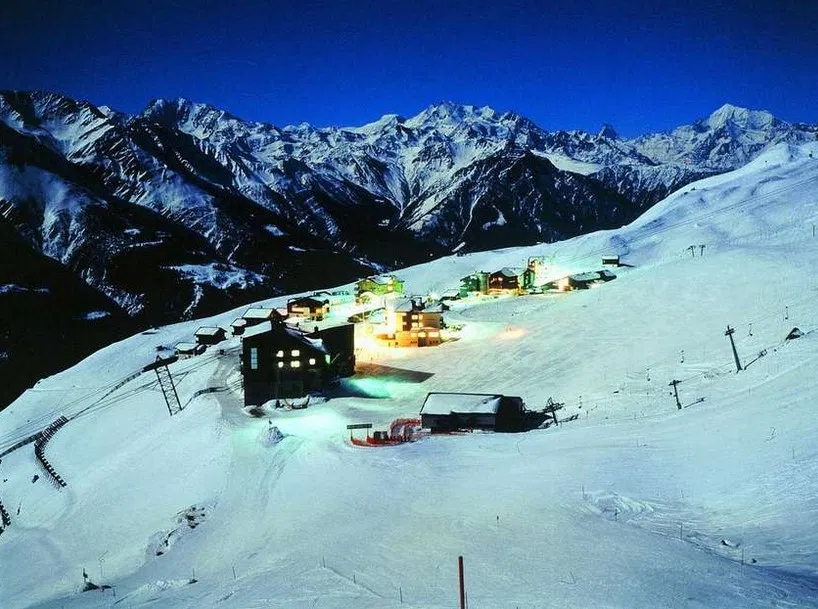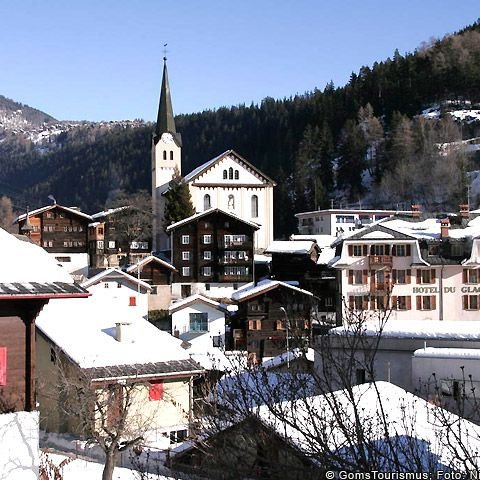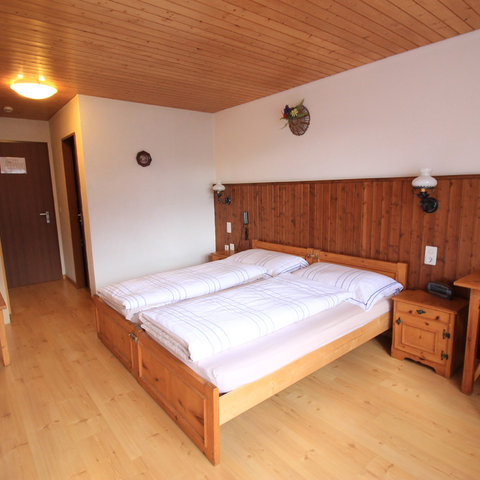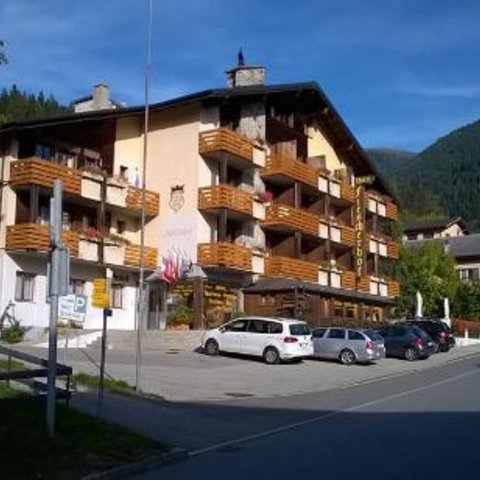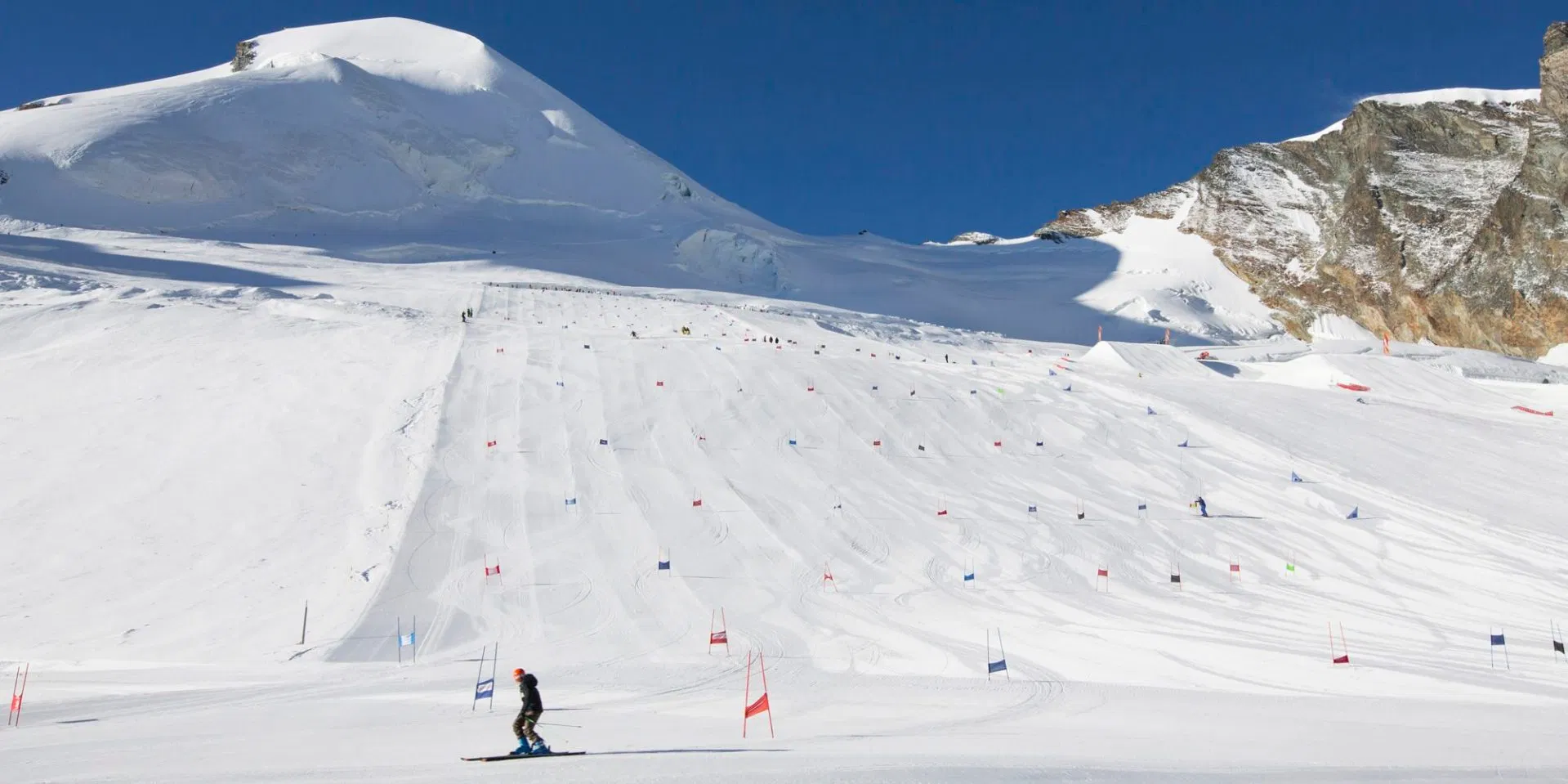
Many people will never have the opportunity to realise the fantastic experience of skiing, particularly on snow. No previous skiing experience is necessary but we will cater for skiers of all abilities. The majority of students on the trip are often complete beginners but we also have groups for advanced skiers.
Ski trips can be expensive, with lift passes, lessons, equipment hire and insurance to pay for, on top of the normal continental travel, food and accommodation.
Depending on the dates that Easter falls, we will be alternating where the ski visits are to to make sure we have the best chance of quality snow.
In 2019 we travelled to Saas Fee in Switzerland.
The ski visit will be open to all pupils in year 7 (it is offered in Y6, a year in advance to spread the payments). The visit includes travel (which may be by air or sea), accommodation, food, ski lessons, ski lift pass (for the whole mountain range) and hire of skis/poles/ski boots. Breakfast and an evening meal will be provided at the hotel and a packed lunch will be provided on the slopes. The only other major outlay would be for clothing, which can be hired or bought.
The students will ski for 6 days and will be taught by fully qualified British instructors who will remain with our party for the duration of the visit. The instructors have worked with me on the trips that I have run over the past 17 years; they are technically excellent, very friendly and patient. The children will be working in groups of an average 8 per instructor, plus one member of school staff where possible, and will receive certificates from Ski Gower at our presentation night.
The resorts we stay in are excellent for all ability ranges, with nursery slopes for complete beginners, to black runs and a fun park for the more advanced. Students will be in groups of similar ability and will only use ski runs that are suitable to them.
Fiesch
SAMPLE ITINERARY & EVENING ENTERTAINMENT
Fri early afternoon – depart from school by coach (or Sat morning for flight)
Fri evening – Ferry crossing, sleep on the coach over night
Sat PM – Arrive in resort, fit skis and boots, familiarise with local area
Sun AM – Ski 2.5hr , packed lunch on the slopes (can buy food at restaurants too)
Sun PM – Ski 2.5hr , evening meal back at hotel, evening activities, sleep for hours!
Mon-Thurs – Repeat (Tues PM we may have a break and do activities locally)
Fri – Ski as usual, early evening meal in hotel, leave and sleep on the coach (for flight – Sat morning)
Sat AM – ferry crossing, arriving back at school Sat PM
Evening entertainment may include : Quizzes, Movies, Pizza and Ice Cream night, Snow and Style night, Bowling and table games, Swimming (if pool has a lifeguard, and parental permission), Karaoke, Presentation night
Clothing & Equipment Kit List
There is a possibility of danger and discomfort due to inadequately clothed young skiers in cold and high ski conditions, even in the sunny mountain climes at Easter. Nevertheless, we would remind you that exposure to cold, wind and altitude are an inevitable part of the fun of learning to ski.
Outer clothing MUST be windproof; snowproof; sealed at the extremities with collars, cuffs, drawcords etc. Layers of clothing should be used under this external shell to give the required protection for the time of the year. The sensible skier will dress for blizzards with vest or T-shirt, cotton polo or ski shirt, light sweater or fleece, if needed, plus the outer ski jacket (anorak) with salopettes or an all-in-one ski suit. Layers of clothing can always be discarded in good weather but remember you should NEVER ski without gloves or with bare arms.
Below is a list of basic items required by skiers some of which can be adapted from normal wear, some which is specialist equipment, but all of which is ESSENTIAL.
- Ski Jacket/Anorack & Trousers or Salopettes or Ski Suit: These should be snow and windproof; warm yet lightweight, sealed at the extremities, with sufficient room for under garments. Windproof hoods are often concealed in the collar.
- Hat/Balaclava/Helmet: Essential to retain body heat in cold weather. Headwear must ALWAYS be taken on the mountain, just in case, (it can be very cold on the ears first thing in the morning on the chair lift!). Helmets are a requirement of the Education Authority and must be worn at all times on the slope (these can be bought or hired before the visit). Helmets are worn without hats. A hat is not likely to be essential at Easter
- Gloves/Mittens: Mittens keep hands warmer than gloves and are more suited to mid-winter, those who suffer from bad circulation or those who fall over a lot! They should NOT be vinyl or wool but be tough, warm, waterproof and sealed at the wrist.
- Cotton Polo/Zip Necks or Similar: Not nylon or similar as this causes excessive sweating and can chill. A cotton vest or T-shirt underneath adds to the layer effect and if it is very cold a medium or lightweight wool sweater or light fleece ensures warmth. Long johns may also be useful to keep the legs warm under the salopettes.
- Socks: Usually only one pair at once is worn. The modern ski boot is insulated and two or more pairs of socks make it difficult to control the skis. Two or three pairs can suffice if they are rotated and rested. They must be loop-lined or wool but NOT nylon or rugby socks as these can cause blisters. They should be almost knee length.
- Goggles or Good Glasses: These are essential to give maximum protection from the intense glare from the sun and the reflected light, even on cloudy days. NEVER ski without eye protection, as snow blindness can permanently damage the eyes. Goggles are best used in snowy conditions and glasses when sunny. Both are useful, if only buying one, I would use Goggles.
- High Factor Sun Cream: This is essential every day and must be re-applied at lunchtime. Cream must always be taken with you onto the mountain. It must be of a high factor; preferably high altitude glacier cream, even if you think you have tough skin. Protection against the sun’s UV rays, reflective light and the mountain wind is very important. Do not even think of skipping the cream to get a good tan – it could cause you to miss a day’s skiing. If using old suncream, check it is in date, otherwise it will not work!
- Lip Salve: Just as important as the cream to protect from the sun, to prevent chapping and painful cracking. It must be applied frequently all day. Brightly coloured sticks are popular but remember they are usually TOTAL block.
- General
- Strong Trainers/Walking shoes should be fine for all outdoor use at that time of the year, and the pupils are provided with ski boots for the mountain. Ideally, students should have separate footwear for indoors. Additionally, they will need;
- Personal medication,
- Travel sickness pills if needed,
- Inhalers,
- Cameras,
- Toiletries (shower gel, soap, hair shampoo, feminine hygiene, toothbrush, toothpaste),
- Towel,
- Nightwear,
- Warm casual clothes,
- Travel adapter,
- Music player,
- Wallet (Swiss francs and Sterling).
Remember that all equipment is taken at your own risk, and that you are responsible for looking after your own. Mobile phones will not be allowed on the visit, parents will have an emergency contact number for us and we will post updates on Twitter.
Skiing is tremendously exhilarating but as with any specialist sport it is very important that you have the correct clothing in order to reduce body-heat loss.
The weather in the mountains can be severe and at high altitudes, rapid changes in temperature are commonplace. Remember warm muscles work more easily and are less easily injured!!

